Solar Roofing Contractors in Austin, TX
The many benefits of using the sun.
Solar roofing offers numerous benefits, especially in sunny weather like in Austin, including significant energy savings, reduced environmental impact, increased property value, and long-term durability. By harnessing the sun’s power, solar roofing provides a sustainable, efficient, and cost-effective energy solution for your home.
What is Solar Roofing?
The structure of a Solar System
Solar cells that are strung together make a module, and when modules are connected, they make a solar system or installation. A typical residential rooftop solar system has about 30 modules.
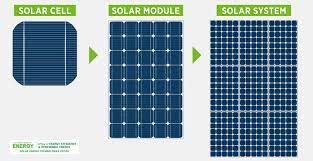
How does a Solar System work?
The solar cells contain a material that conducts electricity when the sunlight provides energy. This material is called a semiconductor, it converts the energy into electricity. The semiconductor is made from materials like silicon. When these semiconductors receive sunlight, a chemical reaction occurs within them, which then releases electrons, that generate an electric current.
Solar Panels Installation Process
1. Engineering site visit
The first step to installing your solar system is an engineer site visit. After you sign a solar contract, an Austin Roofing Company engineer will evaluate the electrical status of your home and ensure everything is compatible. During the Austin Roofing Company engineer’s visit, he or she will review the condition of your roof and your electrical panel to confirm your home can support a solar panel system.
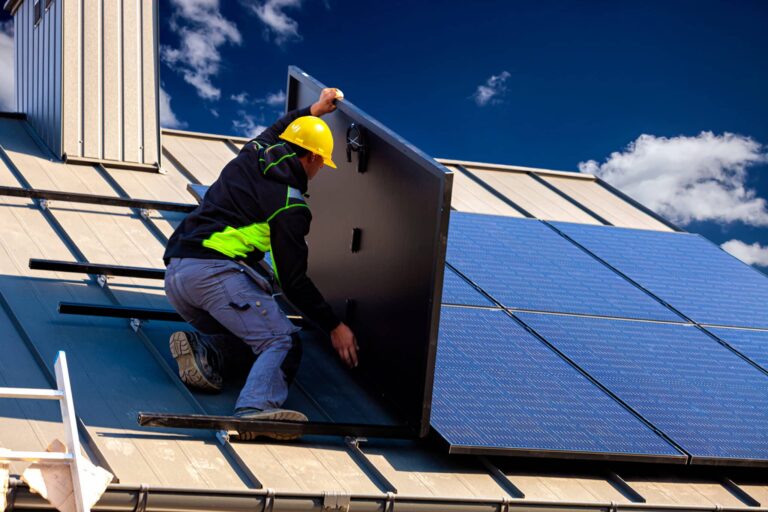
2. Permits and documents
Installing solar panels involves a lot of paperwork. We at Austin Roofing Company will help you deal with most of this The main things to be aware of include:
State and federal incentive
Building permits
Solar loans or leases
3. Ordering your solar panels, inverters, and other equipment
4. Solar installation
Solar panels can be installed in most conditions and times of year––but we may hold off on installing them if it’s going to rain or snow heavily.
Generally, solar panel installations take about one to three days to complete.
Your specific timeline will depend on your system’s size, the complexity of your roof, and whether or not you need to add a power meter for net metering.

The Solar Roofing Installation Process
Austin Roofing Company solar installer will prep your roof and ensure the shingles or tiles are correctly attached.
Next, he will install electrical wiring that connects the solar panels to the electric panel inside your home.
After the electrical wiring is complete, the Austin Roofing Company installer will install racking to support your panels. This is the only piece of equipment that will be attached directly to your roof.
Once the racking is level and safely attached, our installer will attach the panels to the racking.
Finally, the Austin Roofing Company installer will connect your inverter(s) to the panels to convert direct current (DC) energy into the alternating current (AC) energy used in homes.
And finally
Before you can flip the switch and officially begin your home solar energy generation, a representative from your local government will inspect your solar panel system. Following this local inspection, your system will be ready to connect to the utility grid.
Solar Roof Shingles
The Solar market is constantly developing to improve the existing products and deliver new ones.
Solar Roof Shingles combines energy efficiency with aesthetic appeal. These innovative tiles provide both durability and sustainable energy for your home.

Types of Solar Roof Shingles
About 95% of solar panels on the market today use either monocrystalline silicon or polycrystalline silicon as the semiconductor. Monocrystalline silicon wafers are made up of one crystal structure, and polycrystalline silicon is made up of lots of different crystals. Monocrystalline panels are more efficient because the electrons move more freely to generate electricity, but polycrystalline cells are less expensive to manufacture.
Solar Tiles or Shingles
Put simply, solar roof tiles are solar panels that look like roof tiles. They convert energy from the sun and convert it into usable electricity with the help of photovoltaic cells. Much like solar panels, they comprise semi-conducting materials that generate an electric charge and send it to an inverter and eventually a home and/or solar battery.

Unlike roof panels, they take the place of the tiling on the roof and become part of the structure of the home. This requires a more complex installation process which takes longer.
Solar roof tiles are fixed to the position and angle of the roof, which may not always be ideal for optimal sunlight absorption. Like all solar installations, the ideal setup would be on a south-facing roof with a 30° to 50° angle.
Types of Solar Roof Shingles
Solar tiles can vary in terms of the different types of solar panels used and the materials they are made of.
Monocrystalline Solar Panel Tiles
Monocrystalline solar panels (or mono panels) are made from monocrystalline solar cells. Each cell is a slice of a single crystal of silicon that is grown expressly for the purpose of creating solar panels. In the lab, the crystal is grown into a cylindrical log shape called an ingot and is then sliced into thin discs.
Monocrystalline cells contain one silicon crystal.
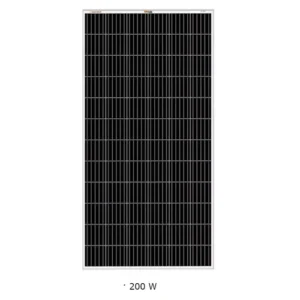
Polycrystalline Solar Panel tiles
Polycrystalline solar panels are solar panels that consist of several crystals of silicon in a single PV cell. Several fragments of silicon are melted together to form the wafers of polycrystalline solar panels.
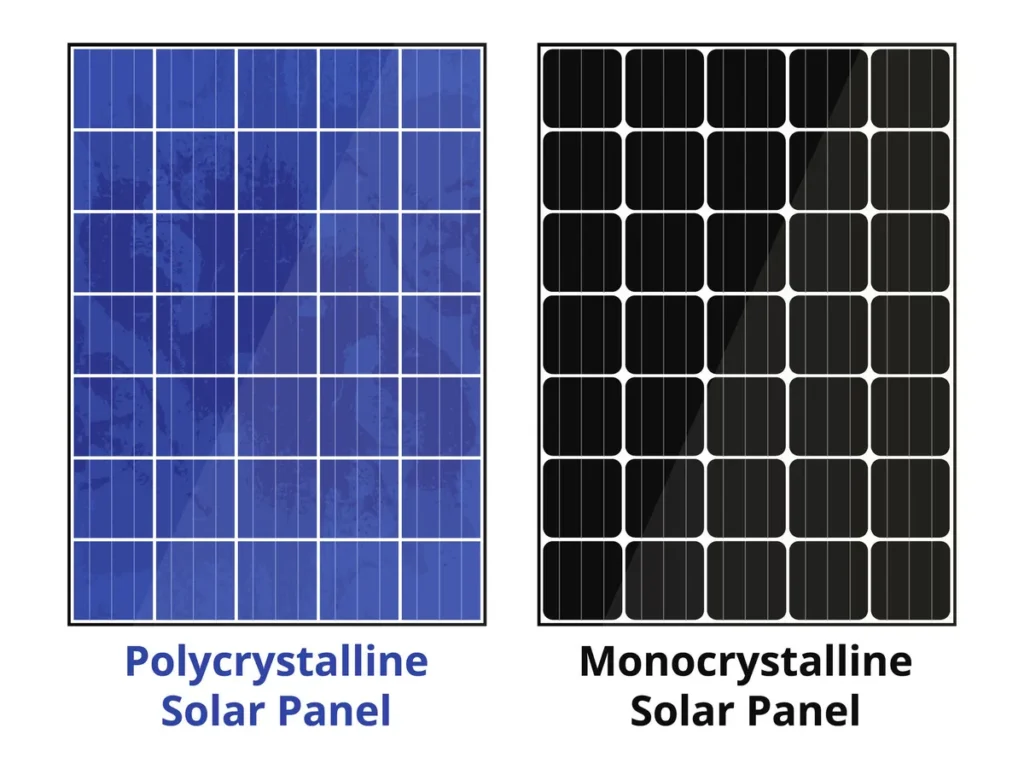
Thin Film Solar Panel
Thin-film solar panels convert sunlight into electricity using a thin layer of photovoltaic (PV) material instead of traditional silicon cells. Thin-film modules are available in both rigid and flexible versions.

Solar Tiles or Shingles Designs
Solar Slate Shingles
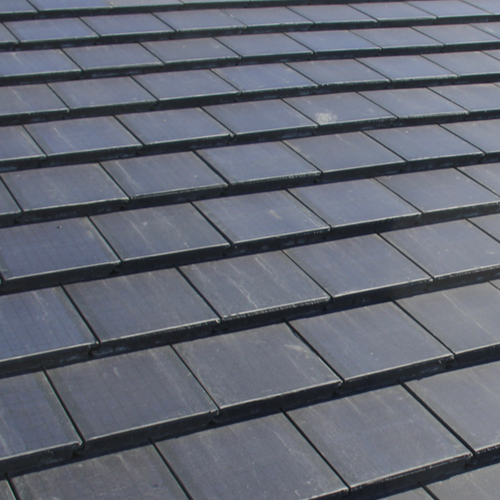
Smooth Glass SolarTiles

Tuscan Solar Tiles
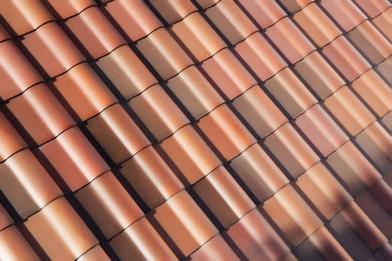
Textured Glass Solar Tiles

Solar Panels vs Solar Tiles
Solar Roof Tiles
- Replace the roof tiles: One of the big differences between solar panels and PV roof tiles is the method of installation. The latter replaces the roof while the former rests on it, which means they take longer (upwards of a week) and have higher installation costs.
- Less powerful: They tend to be less powerful per square meter so they take up more space to achieve the same output. Tiles are 10% to 20% efficient, compared to 18% to 25% for regular solar panels.
- Come in a variety of roof designs: Modern solar panel roof tiles come in a variety of shapes and sizes. Some can mimic classic Tuscan roofs while others look like concrete.
- More expensive: Roof tiles are quite expensive compared to standard solar panels and can be quite an investment, often being 30% to even 50% more expensive than standard solar panels.
Solar Panels
- Clamp onto the roof: Solar panels are fitted onto a roof and don’t require drastic alterations. This can make them preferable for some people and thus are more likely to fit hazard requirement regulations.
- More powerful: Solar panels tend to be more powerful than solar roof tiles as they have better efficiencies. This also means they require less space (and fewer panels) for the same power output.
- Harder to visually integrate: Unlike solar roof tiles and integrated solar panels, regular solar panels rest on top of the roof and can be visually displeasing.
- More variety: In terms of functionality, the various brands and their models provide a lot of variety to choose from.
- Easier to install: In most circumstances, solar panels are easier to install than tiles, which can mean lower labor costs and easier replacement if needed.
What is the lifespan of solar panels?
The longer your solar panels continue to effectively generate electricity, the more money you will ultimately save. The good news is that most residential solar panels should operate for 25 years before degradation (or reduced energy production) is noticeable.
Even after that point, solar panels can continue to convert sunlight into solar energy—just at a less efficient rate than when they were new.
Beyond production warranties for the solar panels, many manufacturers offer shorter warranties for the related equipment. This can help cover damage that occurs due to extreme weather events, fallen branches, and so on.
Solar inverters generally last 10 to 15 years. This shortened lifespan is due to how hard inverters continually work to convert energy from the solar panels into usable electricity for your home. On average, solar inverters cost $1,000 to $2,000 to replace.
Can Solar Panels withstand hail?
Solar panels are designed to withstand harsh weather conditions, like high winds and heavy rain – but what about frozen balls of hail falling from the sky?
Luckily, severe hail storms aren’t super common around the country, and most solar panels can withstand light-to-moderate impact. But, for those who live in areas of the U.S. more prone to hail storms – such as Texas, Colorado, or Nebraska, it’s helpful to understand exactly what happens to solar panels when exposed to hail and what measures to take to protect them.
Hail storms occur between March and October. States that receive the most hail include Texas, Colorado, and Nebraska.
Hail can damage the external surface AND internal components of solar panels.
Not all solar panel warranties cover hail damage. Most homeowners’ insurance provides hail coverage for solar panels installed on rooftops.
High-quality solar panels are very resistant to hail damage and have been tested to withstand such severe weather events.
How much can I save with solar roofing?
A solar power system can generate solar energy at around 5-6 cents per kWh.
Compare that to your current bill, and it’s pretty obvious why over 3 million homes now have solar panels installed on their roof.
The price of solar panels is at a record low, with an average-sized 10kW solar system with good quality solar panels now costing as little as $8000-$9000 fully installed. That size solar system generates about 40 kWh a day of solar energy averaged out across the year.
If we assume you are paying 30c per kWh, you can expect to save up to and even over $4,000 from solar energy every year on your power bills with a 10kW solar system if you use all of the solar energy as it is generated.
Are there any government incentives?
Federal Solar Tax Credit.
Also referred to as the Solar Investment Tax Credit (or ITC).
Claim 30% of the solar system cost as an income tax deduction.
This is a direct reduction in tax an individual or business owes to the government.
Property tax exemption.
Install a solar system and keep the property tax the same.
Net metering.
Sell solar energy to your utility company at a 1-for-1 rate.
Solar rebate programs.
Benefit from rebates provided by your utility company.
Austin Energy offers a $2,500 rebate after completing their free educational course. With this course, the company wants to help its customers make an informed choice about solar power.
Why should I consider installing Solar Panels or Solar Tiles if I'm living in Austin Texas?
Sunlight
The first obvious reason for this is a lot of sunlight. Texas gets 135 clear days a year and about 5.73 peak sun hours daily. A 7-kilowatt solar system will generate over 30 kWh/day of AC for half a year, enough to fully power a medium-sized house.
Power outages
Texas also has the most power outages in the US. A solar system with batteries makes a lot of sense in Texas because of the high number of power outages, according to Climate Central, Texas experienced more power outages than any other state.
Electricity price spike up
An average Texas household, consuming 1,094 kWh monthly, pays $158.19 for electricity. This is close to an average bill across the US. The prices are rising rapidly though the price per kWh jumped 11.34% from 12.82 ¢/kWh in 2022 to 14.46 ¢/kWh in 2023.


